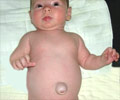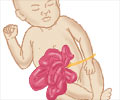A new comprehensive guideline for the treatment of congenital diaphragmatic hernia has been suggested.

- The new guideline for the treatment of babies diagnosed with congenital diaphragmatic hernia, aims to help physicians to manage the conditionfrom the time of diagnosis to their teenage years.
- Congenital diaphragmatic hernia is a "hole" in the diaphragmatic muscle that separates the chest from the abdominal cavity. Through this hole or hernia the intestines can prolapse into the chest cavity causing serious problems including death.
- The guidelines have been created to provide standardized care of the kids through their three phases of childhood: prenatal, postnatal and teenage years.
The lack of "best practices" on how to manage this complex condition leads to significant variability in care across Canada. The guideline was created to provide standardized management through three phases: prenatal, postnatal and childhood/teen stages of life.
The guideline was created to provide standardized management through three phases: prenatal, postnatal and childhood/teen stages of life. The condition requires the expertise of a variety of specialists in addition to primary care physicians. The lack of "best practices" on how to manage this complex condition leads to significant variability in care across Canada.
"We saw this as an opportunity to improve outcomes for children with a congenital diaphragmatic hernia by standardizing care across Canada," says Dr. Pramod Puligandla, Montreal Children’s Hospital, Montreal, Quebec, and the project lead of the Canadian Congenital Diaphragmatic Hernia Collaborative that developed the guideline. "We hope this evidence-based guideline will be useful to all clinicians involved in the care of these infants."
The authors consulted existing recommendations before creating their own and note that the new Canadian guidelines are more in-depth than the guidelines from Europe. The new guidelines also cover all aspects of care for congenital diaphragmatic hernia rather than specific lung problems, which recent guidelines from the American Heart Association/American Thoracic Society focus on.
"Long-term disability surveillance is essential, especially in high-risk patients, and should be managed by interdisciplinary teams of primary care physicians, pediatricians, pediatric subspecialists, pediatric surgeons and other allied health professionals," the authors conclude.
- Pramod S. Puligandla, Erik D. Skarsgard, Martin Offringa, Ian Adatia, Robert Baird, et.al. Diagnosis and management of congenital diaphragmatic hernia: a clinical practice guideline, Canadian Medical Association Journal (2018).DOI: https://doi.org/10.1503/cmaj.170206
Source-Eurekalert










